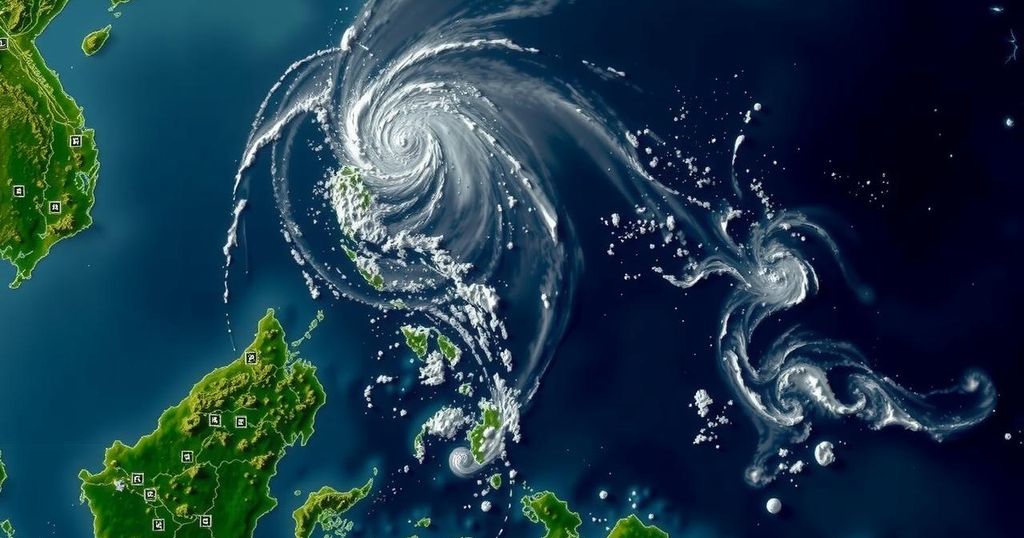Typhoon Toraji Devastates Northern Philippines Amidst Impending Storm Threat

Typhoon Toraji has severely impacted northern Philippines, causing floods and power outages while displacing thousands. Following previous storms, the government is mobilizing disaster response teams as a new storm approaches, adding to the humanitarian crisis. No fatalities have been reported, but a massive relief effort is underway to assist affected communities.
Typhoon Toraji has wreaked havoc across the northern Philippines, resulting in extensive flooding, fallen trees, and widespread power outages, before dissipating into a tropical storm and moving into the South China Sea. This disaster follows a series of four consecutive storms that left numerous communities in Luzon devastated. Authorities are now preparing for yet another storm forecasted to strike later this week, which underscores the ongoing crisis faced by the nation. Despite the severe conditions, there have been no immediate reports of fatalities linked to Typhoon Toraji. Clean-up efforts are underway as local authorities work to unblock roads hindered by fallen debris, enabling the delivery of essential supplies to isolated areas. The Philippine military, along with police and coast guard units, are involved in these disaster-response efforts, while President Ferdinand Marcos Jr. assured citizens of forthcoming assistance to those impacted by the storm. The situation remains critical in northern regions like Cagayan province, where torrential rains caused significant flooding, affecting 25 villages across six towns. Heavy rains have rendered 22 bridges impassable, while power outages have been reported in Tuguegarao city and surrounding areas. In anticipation of the approaching storm, evacuation orders were issued for approximately 2,500 villages at risk of severe weather. Moreover, the impact of Typhoon Toraji follows a terrible sequence wherein the last two typhoons and a tropical storm led to over 160 deaths, displacing more than nine million individuals. With the substantial rainfall from Toraji equating to one to two months’ worth of precipitation occurring within a single day in some locations, the need for urgent humanitarian assistance is clear. The distributions of relief efforts are bolstered by support from international partners, such as the United States and Southeast Asian nations, who are providing crucial resources to the affected provinces. The Philippines, which experiences nearly 20 typhoons annually, remains one of the most disaster-prone countries globally, grappling with both natural disasters and a myriad of seismic activities.
The Philippines is situated in a region that is highly susceptible to tropical storms and typhoons, with an average of twenty such weather disturbances battering the archipelago each year. This vulnerability is exacerbated by the country’s geographical location—exposed to the Pacific Ocean—and its prevalent mountainous terrain, which increases the likelihood of landslides and flash floods. Typhoon Toraji, the 14th storm to hit the Philippines in 2023, follows devastating impacts from earlier storms which claimed over 160 lives and caused extensive property damage across the nation.
Typhoon Toraji has compounded the woes of the Philippines, already reeling from previous storm damages. With the ongoing threat of another forthcoming storm, the nation’s disaster response efforts are under immense pressure. The international community’s support underscores the urgency for immediate relief, while the lingering risks associated with seasonal typhoons highlight the need for long-term resilience and preparedness planning in disaster-stricken areas.
Original Source: www.seattletimes.com







